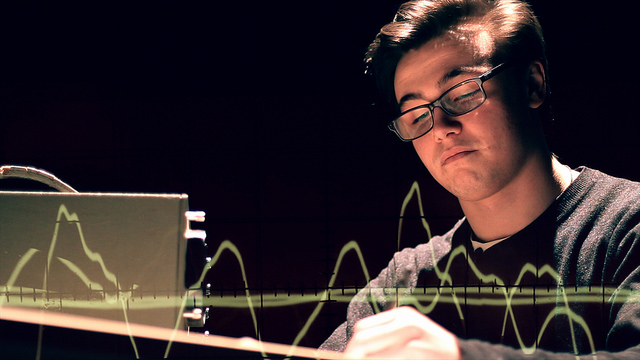
Research Check: is it true only half your friends actually like you?
Editor’s note: Previous articles in RealKM Magazine have examined the hyping of language used in science abstracts and the low quality of science reporting in the mainstream media. A follow-on editorial article then used a paper published in the highly respected journal Science to illustrate these issues. Recently, the hyping of science has been facing increasing scrutiny, and the article below looks critically at a further example.
Lisa A Williams, UNSW Australia
It seems obvious that your friends would agree they are your friends. But recent findings published in the journal PLOS ONE call this into question.
At least that’s the message you would take if you went with popular media coverage of the findings. Headlines such as “Only half your friends actually like you, study reveals” may make you wonder about the holes in your social network.
Friendships contribute to our mental and physical health; our well-being suffers without them. So is it true only half your friends like you?
The research in question does not, in fact, speak to that. But it does shed light on the nuances of how friendship is perceived. Liking someone is not the same as nominating them as a friend: we can all think of a friend we don’t like very much, can’t we?
Nor did the research aim to find out whether friends liked each other. Rather, the authors set out to explore how friendship reciprocity mattered when implementing broader social interventions, such as enabling someone to quit smoking.
The research addressed two questions. First, what proportion of friendships are reciprocal? That is, how many of a person’s friends also rate that person as their friend? Second, to what degree does reciprocity in friendships matter when it comes to how peers influence each other?

The first question
To answer the first question, 84 students in a Middle-Eastern, undergraduate business-management class were asked to rate the other 83 students on a scale from zero to five. In this reciprocity survey, zero represented “I do not know this person” and five was “one of my best friends”. The midpoint anchored at “friend”. Students were also asked to indicate how the other 83 would rate them.
The benefits of this approach was that researchers had access to full cross-overs of data in a closed network. This enabled sophisticated statistical network analysis, which couldn’t be afforded by looking at an open community in which all members cannot be identified or accessed.
Researchers coded the data such that a score of three or higher was considered a friendship. From the 6,972 ratings provided by the 84 students in the business class, 1,353 counted as friendships.
In 94% of these perceived friendships, students expected them to be reciprocal. So if John rated Jack as his friend, he expected Jack to rate him as a friend also. But this was so in only 53% of cases; less than half of the students had their friendship beliefs about others reciprocated.
What does this mean?
From this data it seems that, in social networks, there is low agreement on perceived friendships. The study’s authors float one reason for this: we carry an optimistic view of friendships with higher-status individuals. That is, we project friendship with people who have more social clout than us in the perhaps naive hope they will reciprocate.
But because the reciprocity survey can’t speak directly to this possibility, it remains for future research to test this logic.

Felipe Bastos/Flickr, CC BY
It’s also important to ask whether we can really extrapolate to humanity based on 84 students in a university classroom. Between the relatively small sample size, the constrained context of an undergraduate classroom and cultural constraints in the sample, one could argue no extrapolation should take place.
Another thing to keep in mind is the scoring approach: carving the line for friendship at three or above on a five-point scale is a subjective call. One can question whether friendships should be treated categorically or whether there is a more valid approach to quantifying friendships in all their complexity.
The second question
For the second question, researchers deployed a fitness intervention on a separate sample of participants who lived in the same residential community and had all completed friendship ratings as in the reciprocity survey.
Participants had software installed on their mobile device that tracked their physical activity and allocated financial rewards for their fitness progress. In two versions of the software, residents were paired with two buddies who could see one another’s progress and potentially be rewarded for the other’s progress.
The critical test for the research question, with regards to peer influence, stemmed from analysing participants’ fitness changes as a function of the type of friendships they held with their buddies.
Once again, the approach of sampling from a residential community gave the researchers access to full data from a closed network, enabling nuanced analysis of the social dynamics at play. But, once again, the sample size was small and the context has similar limitations when it comes to broader extrapolation.
What were the results?
It would be logical to think friends who agree they are friends (reciprocal friends) influence one another, in a preferably positive way. The findings corroborated this: when a resident’s fitness buddies were reciprocal friends, those buddies helped facilitate positive outcomes in the form of more activity.

from shutterstock.com
But when it comes to non-reciprocal buddy-to-resident friendships, it is important to look at the direction of each friendship. An incoming friendship means a buddy rated the resident as a friend, but the resident did not rate the buddy as a friend. An outgoing friendship means a resident rated the buddy as a friend, but the buddy did not do the same.
The study found outgoing friendships from residents to buddies had no influence on residents’ physical activity. If Max thought Jack was his friend but Jack didn’t agree, and the pair were buddies, Jack had no influence (either positive or negative) on Max’s fitness outcomes.
But the influence when it came to residents’ incoming friendships from their buddies was positive. Max would have positively influenced Jack’s outcomes, even though Jack didn’t agree that Max was his friend. And the influence was even more positive when it came to reciprocal friendships.
What does it mean?
A popular approach in public health interventions is nominating a buddy to support someone in their efforts for behavioural change.
The reciprocity survey shows people are inaccurate in predicting who considers them a friend and that many friendships are in fact outgoing rather than reciprocal.

California National Guard/Flickr, CC BY
These findings have practical importance in that they show the popular buddy-nomination approach is likely less effective than we would want. Instead, we need to identify reciprocal friendships, since these are most effective. Next desirable would be incoming friendships, rather than the outgoing ones.
What else should we take into account?
It important to highlight that the researchers corroborated the reciprocity survey findings in five more samples.
First, the reciprocal friendship rate among the fitness residents was 45% – even lower than the 53% in the business class.
Second, researchers carried out the analysis on several other data sets they had worked on in the past. Reciprocal friendship estimates derived from these were similar, ranging from 34% to 53%. Replication raises the degree to which we can infer broader social processes based on the dynamics established in this particular study.
But again, all this talk of whether our friends like us misses the point. When it comes to social influence – in particular, the type of positive peer influence we try to seek when engaging in behavioural change – reciprocal friendships are of key import.
When we can’t access reciprocal friends, we need to seek support from people who nominate us as friends, not the other way around. – Lisa A. Williams
Peer Review
This article has identified key weaknesses in this paper’s study designs as well as the problem of the scale used to judge friends’ feelings towards each other.
My biggest problem with this paper, though, is the sensationalised interpretation of the results. The study abstract claims “people are typically poor at perceiving the direction of their friendship ties”, and media reports state that “only half of your friends like you”.
But the data support a humbler, and perhaps happier, story. In fact, when participants claimed someone as a friend, the other person reciprocated 70% of the time. So while it’s true around half of the friendships in the study were mutual, it still found close to three-quarters of your friends “like you”.
For instance, Bill says Sally is his friend and she agrees. Jim says Bob is his friend, but Bob doesn’t name Jim as a friend in return. We now have two friendships and only one (50%) is mutual. But of the three people who claimed a friend, two (Bill and Sally) were right (66%). It takes twice as many people to make a mutual friendship, which is why those two numbers differ.
It’s worth noting we do have a tendency to slightly overestimate our friend’s closeness, but my take-home message from this paper is that we’re actually better at judging how close our friends feel to us than just about anything else about them. – Sean Murphy
* An earlier version of this article said researchers considered a score of two or higher on the reciprocity survey a friendship. This has now been corrected to a score of three or higher.
![]()
Lisa A Williams, Senior Lecturer, School of Psychology, UNSW Australia
Article source: This article was originally published on The Conversation. Read the original article.






